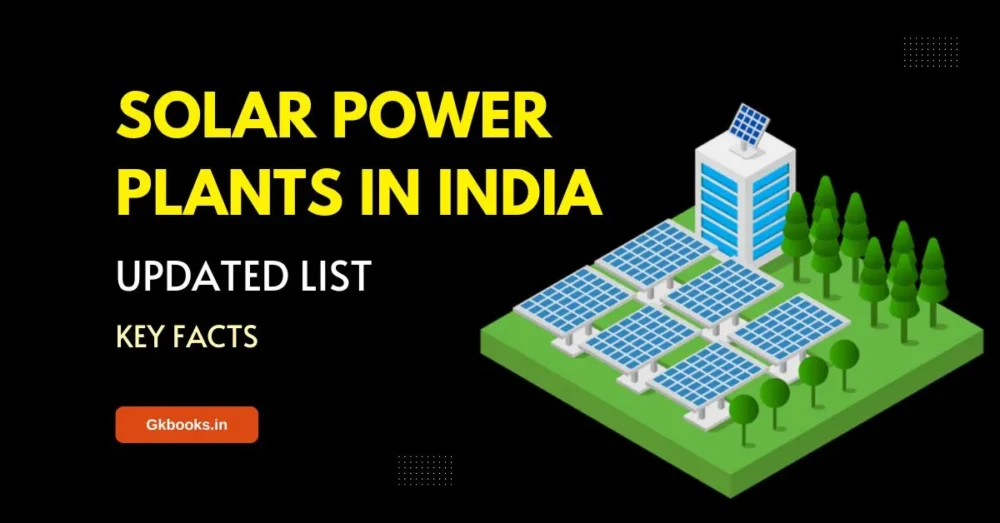- India experiences a monsoon climate, with the term “monsoon” originating from the Arabic word ‘mausim,’ signifying a seasonal reversal in wind direction.
- The country’s climate is shaped by two primary wind patterns: one originating from the Arabian Sea and the other from the Bay of Bengal.
- The Indian Meteorological Department categorizes India’s climate into four distinct seasons: Winter, Summer, Rainy, and Autumn.
The Winter Season
- The winter season in northern India spans from mid-November to February.
- The temperature gradient decreases from south to north, with the eastern coast averaging between 24° – 25° Celsius and the northern plains ranging from 10° – 15° Celsius.
- Days are warm, while nights are cold, leading to frost in the north and snowfall in the higher Himalayan slopes.
- North-East trade winds dominate, resulting in a dry season for most of the country.
- Tamil Nadu’s coast experiences some rainfall as the winds blow from sea to land.
- A feeble high-pressure region in the northern part of the country leads to light winds moving outward.
- Ganga Valley experiences west and northwest winds, contributing to clear skies, low temperatures, low humidity, and variable winds.
- Cyclonic disturbances from the west and northwest bring winter rains to the northern plains and snowfall in the mountains, originating from the Mediterranean Sea and western Asia.
- Due to the sea’s moderating influence, the peninsular region lacks a well-defined cold season, with minimal temperature changes during winters.
Key features of the winter season in India
Cold Weather
Winter brings cooler temperatures across most parts of India, with significant drops observed in northern regions, especially in the higher altitudes of the Himalayan region where sub-zero temperatures are common.
Fog and Mist
Many northern parts, particularly the Indo-Gangetic plains, experience frequent fog and mist during winter, impacting visibility and causing transportation disruptions.
Winter Sun
Despite colder temperatures, the winter sun is often pleasant, providing an excellent opportunity for outdoor activities during the day.
Winter Clothing
Residents in colder regions opt for warm clothing during winter, including sweaters, jackets, shawls, and thermal wear to stay comfortable in the chilly weather.
Winter Festivals
Winter marks the celebration of various festivals, including Christmas, New Year’s Eve, Makar Sankranti, Lohri, and Pongal, each having unique cultural significance across different regions.
Tourism
Winter is a peak time for tourism, especially in regions with milder winters like Rajasthan, Goa, and parts of South India. Northern hill stations attract tourists seeking snowfall and winter sports.
Snowfall
Northern mountainous regions such as Himachal Pradesh, Uttarakhand, Jammu and Kashmir experience the much-awaited snowfall, attracting enthusiasts and adventure seekers.
Winter Wildlife
Many wildlife sanctuaries and national parks remain open during winter, providing opportunities to spot migratory birds and observe wildlife in its natural habitat.
Winter Crops
Certain regions in southern India cultivate specific crops during winter due to the favorable climate conditions.
Acknowledging India’s diverse geography is important, resulting in varied winter experiences across regions. While some areas enjoy relatively mild winters, others face extremely cold temperatures, necessitating consideration of specific weather conditions when planning a visit. This provides an overview of one of India’s seasons, specifically Winter.
The Summer Season
- The summer season in India extends from March to mid-June and is characterized by a temperature increase nationwide due to the summer solstice.
- Hot and intense winds, known as ‘loo,‘ blow during the daytime in northern and north-western India.
- As the Sun moves gradually northward (Summer Solstice), the Inter-Tropical Convergence Zone (ITCZ) shifts northward, reaching the 23.5° latitude in July.
- The convergence of hot, dry land breezes and humid sea breezes during this season gives rise to violent cyclones, known as pre-monsoon cyclones, bringing heavy rainfall and hailstorms.
Local names are given to these cyclones, including:
- Nor Wester in Eastern India (West Bengal, Bihar, Jharkhand, Odisha), beneficial for tea and rice cultivation.
- Kalbaishakhi in West Bengal (Nor Wester is called Kalbaishakhi in the local language).
- Cherry Blossom in Karnataka and Kerala (supportive of the blooming of coffee flowers).
- Mango Shower in South India (useful for the early ripening of mangoes).
- Bardoli Chheerha in Assam (Nor Wester is called Bordochila in the local language).
Key features of the summer season in India
Hot Temperatures
Summer witnesses a steady rise in temperatures across India, with many areas experiencing high temperatures, often exceeding 40 degrees Celsius (104 degrees Fahrenheit) in the plains. Coastal regions remain relatively cooler due to the sea’s moderating influence.
Dry Weather
Summer is generally a dry season in most parts of India, characterized by limited rainfall. This dry spell contributes to the intense heat and can lead to water scarcity in certain regions.
Mango Season
The Indian summer marks the arrival of juicy and delicious mangoes. Different varieties become available, making it a highly anticipated fruit season for many.
Summer Vacation
Schools and colleges observe summer vacations during this period. Families often plan trips to cooler hill stations or other tourist destinations to escape the heat.
Heatwaves
Some regions, particularly central and northern India, face heatwaves during peak summer. Heatwaves involve prolonged periods of excessively high temperatures, posing health risks and necessitating precautions.
Monsoon Arrival
Towards the end of June, the southwest monsoon begins to enter India, relieving the scorching heat. The monsoon’s arrival is eagerly awaited, as it replenishes water sources and provides respite from the heat.
Indoor Activities
Due to the extreme heat, people often prefer indoor activities during the hottest parts of the day, such as watching TV, reading, or spending time with family.
The Rainy Season
- The monsoon season in India spans from mid-June to September. It is characterized by a low-pressure system intensifying over the northern plains, attracting trade winds from the southern hemisphere.
- South-east trade winds, originating from the warm sub-tropical areas of the southern oceans, cross the equator and enter the Indian peninsula as the southwest monsoon, leading to a significant change in weather.
- The easterly jet stream influences the southwest monsoon, approaching land masses through two branches: the Arabian Sea Branch and the Bay of Bengal.
- The Arabian Sea branch results in more rainfall on the Western coast, Western Ghats, Maharashtra, Gujarat, and some areas of Madhya Pradesh.
- Passing through Rajasthan, it hits the Himalayas, causing rainfall on the mountainous slopes of Jammu & Kashmir and Himachal Pradesh. However, Rajasthan receives minimal rainfall due to the parallel orientation of the Aravali Range and dry, hot winds from the Sindh region, reducing humidity.
- Mawsynram, in the southern Khasi Hills, receives the world’s highest average rainfall. Rainfall in the Ganga Valley decreases from east to west.
- The Bay of Bengal branch enters India through West Bengal and reaches Haryana, Punjab, and Rajasthan via Bihar and Uttar Pradesh.
The Autumn Season
- Autumn in India is a transitional phase between the monsoon and winter seasons, spanning from October to November, with slight regional variations.
- This season is marked by milder temperatures, clearer skies, and a gradual reduction in humidity, providing a refreshing change in weather.
- The timing and duration of autumn can vary across different regions of the country.
- It is commonly referred to as the retreating season of the monsoon, marked by the gradual withdrawal of the south-west monsoon.
- Northern India experiences no rainfall during this period, but several cyclonic storms form in the Bay of Bengal.
- These storms move from the northeast to the southeast along the eastern coast, resulting in rainfall in the Tamil Nadu Coast and Sri Lanka.
Key features of the Autumn season in India
Pleasant Weather
Autumn brings a welcome change in weather after the monsoon retreats and before the winter chill, providing moderate temperatures suitable for outdoor activities.
Clear Skies
The dispersal of monsoon clouds during autumn results in clearer skies and sunny days, creating ideal conditions for sightseeing and enjoying the country’s natural beauty.
Harvest Season
This season is crucial for agriculture, serving as the post-monsoon harvest period. Farmers gather crops and festivals like Diwali, celebrating the festival of lights and expressing gratitude for a bountiful harvest.
Festivals and Celebrations
Autumn hosts various festivals such as Durga Puja in West Bengal, Navratri in Gujarat and other states, and Dussehra, each celebrated with unique customs in different regions.
Transition in Landscape
The landscape undergoes a shift during autumn as the greenery from the monsoon season fades, and some trees shed leaves, creating picturesque scenes, especially in hilly areas.
Tourist Season
Due to favourable weather conditions, Autumn is a preferred time for tourists to visit India. Popular tourist destinations across the country attract visitors during this season.
Regional Variations
While autumn’s general characteristics apply to most of India, there can be regional variations in weather and cultural practices during this time, adding diversity to the overall experience.
Autumn in India offers a vibrant and enjoyable season, blending cultural festivities, pleasant weather, and the beauty of nature. It acts as a bridge between the rejuvenating monsoon and the cool embrace of winter. This provides an overview of one of India’s seasons, specifically Autumn.
More on Indian Geography:







